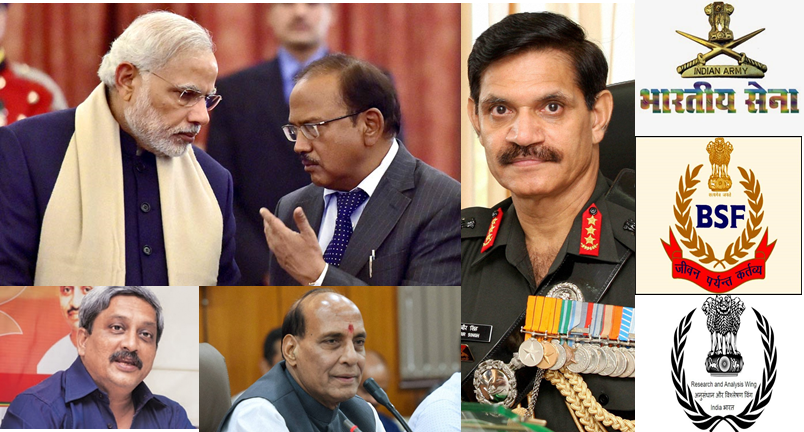In the past one year Pakistan has carried out 3 back to back terror strikes in India starting with Gurdaspur and followed by significant attacks on India’s defense bases, first one on Pathankot Air base followed by the Uri attacks.
While the public opinion is that India should go all out and at least carry out operations which are ‘just short of an all-out war.’
What the proponents of such an offensive defence strategy are missing is the fact that there are certain loopholes on the Indian side itself or how could certain terrorists cross in from the other side of the border and carry out such horrendous and conscience shocking terror strikes.
The Government of India should make sure that all such loopholes are taken care of in order to make sure that if and when India decides to take some sort of action against the Pakistan for dismantling the terror factories on the other side of the LoC.
Then, the Armed Forces are competent enough to tackle the plausible repercussions. Here is a list of the reforms that India could carry out before heating up things along the LoC.
Improving coordination of Forces with intelligence agencies:
There were reports that an intelligence alert had been sounded before the Uri as well as Pathankot attack which was not taken cognizance of leading to martyrdom of the invaluable soldiers.
A much needed reform that the Centre should now contemplate is ensuring greater coordination between the intelligence authorities and the BSF or as the case may be the Indian Army Border out Posts across the Indo-Pak Border.
Another significant reform can be recruitment of a dedicated intelligence cadre in the Border Security Officer (currently there is a common Assistant Cadre-Inspector General Cadre).
Thus, trained personnel having specialization in trans-border intelligence collection can ensure that the missing coordination between the forces and the intelligence agencies can be taken care of.
Improving the capabilities of Indian Paramilitary Forces:
The CAPF (Border Forces exclusively) were constituted for playing a supportive role to the Indian Army around the bordering regions in wartime and guarding the border areas in peacetime and maybe involving in light combat.
The ammunition with the CAPF and the training to CAPF personnel was imparted accordingly. Today, the Border Security Force is facing a proxy war across the Indo-Pak Border (except the LoC region).
Hence, there is an urgency to improve the capabilities of at least the Border Security Force; this may entail training the current personnel for the changed circumstances and carrying out further recruitment accordingly.
The ammunition and equipment also needs to be changed accordingly. The BSF may no longer be just a supportive force but for the time being a prototype of the Indian Army performing similar if not identical functions.
Improving the weapon and equipment acquisition process:
The Indian Army troops were seen tackling terrorists without helmets but temporary or substandard safety equipment.
Moreover, both the paramilitary forces and the Indian Army are lacking in carbines, artillery and other weapons required for intense fighting.
The shortage of Arms with the Armed Forces is no longer a secret. Since the tensions between the two Nations seem to be escalating it is time that the Defence Ministry, relaxes the strict procedure for acquisition of ammunition, at least till the tensions deescalate.
Conclusion:
The Indian Army speaks of a glorious past having emerged as victors in three intense wars with Pakistan.
However, the 21st century Indo-Pak relations have shown a new trend, Pakistan is no longer willing to engage in a direct battle but has resorted to tactics of a proxy war and cowardice. India needs to prepare accordingly, make its borders impenetrable and then reply with full strength so that the diplomatically defeated enemy is militarily damaged too.
